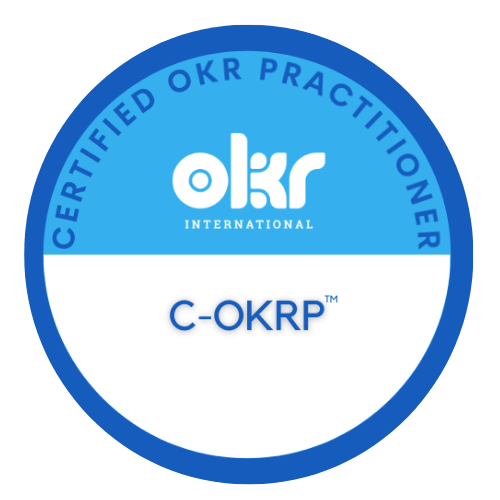Accountability
Accountability is usually associated with goals and outcomes in the world of OKRs. It simply means who owns a particular OKR and is responsible for the result.
Action item
Action item is typically associated with a list of tasks to be done, which may be a part of Initiatives or things agreed upon within an OKR Cadence Review.
Agile
Agile is used in two different connotations. One- as a methodology in software development which includes various approaches like Scrum, Kanban, etc. The other connotation is associated with being nimble-footed and quick to respond to the ever-changing marketplace and customer needs.
Alignment
Alignment, in the world of OKRs, usually means the ability of a team to ladder up to an OKR. Alignment is usually seen bottom-up or across teams.
Aspirational OKRs
Aspirational OKRs are a OKR term usually used to denote Moonshot OKRs. Moonshot OKRs are generally longer in duration and work on game-changing ideas, eventually leading to innovation.
Audacious Goals
Audacious Goals is a more concise definition for the oft-used term BHAG (Big Hairy Audacious Goals). These audacious goals are meant to create leapfrog, exponential goals that are game-changers for any organisation. They usually have a risk element attached to them.
Balanced Scorecard
Balanced Scorecard is a strategic planning and management system. The balanced scorecard gives organisations a way to connect the dots between various components of strategic planning and management and the way they are measured using KPIs. Balanced scorecard usually has KPIs around two lag measures, viz. Financial perspective and Customer perspective and two lead measures viz., Internal perspective and Learning and growth perspective.
Barriers
Barriers are usually discussed during OKR implementation. After goals are set, teams come in at a regular cadence frequency to assess and learn how their OKRs are progressing. In this realm of things, barriers may be elements that prevent teams from achieving their OKRs. Common forms of barriers may include lack of resources, lack of time, poor behaviors, poor leadership, etc.
Benchmark
Benchmark is something that serves as a standard by which a particular key result, metric, KPI may be measured. The benchmark may be the metric itself, or the target for that metric.
B.H.A.G
Big Hairy Audacious Goals is a compelling long-term goal that is inspiring enough to motivate a team. BHAG comes from the 1994 book "Built to Last: Successful Habits of Visionary Companies" by Jim Collins and Jerry Porras.
Bi-directional
Bi-directional is usually used in connection with aligning OKRs. It simply means connecting lower-level OKRs to higher-order OKRs or connecting tactical OKRs to strategic OKRs. Bi-directional involves first setting the stage through strategic OKRs (more top-down) and aligning tactical OKRs (more bottom-up), thus creating a bi-directional alignment.
Balancing an OKR
Balancing an OKR essentially means creating a healthy mix of OKRs at various levels. At a strategic level, balancing Objectives simply means getting a good mix of Objectives across customers, innovation, performance, growth and internal culture related areas. At tactical levels, balancing Key Results becomes critical. This typically means balancing Key Results that may be efficiency (speed) and effectiveness (quality)-related or top-line and bottom-line related. Creating a balanced OKR ensures there is contribution from all corners of the organisation, thus providing sustainable growth.
B.A.U
B.A.U. 'stands for business as usual'. As an OKR term, they are usually spoken when one needs to describe hygiene or maintenance related work that teams or businesses need to perform in order to keep the core of the business running. Simply said, it's the normal execution of standard functional operations within an organisation.psum dolor sit amet, consectetur adipiscing elit. Ut elit tellus, luctus nec ullamcorper mattis, pulvinar dapibus leo.
Bottom-up alignment
Bottom-up alignment is a process of empowering teams to come together and co-create OKRs that are truly aspirational. These OKRs are then validated to check how they ladder up to some of the strategic or parent level OKRs.
Cadence Review
Accountability is usually associated with goals and outcomes in the world of OKRs. It simply means who owns a particular OKR and is responsible for the result.
Cascade
Cascading is an OKR term usually associated with OKRs when Objectives and Key Results are broken into smaller parts and divided among lower teams. This is usually connotated with top-down management goals.
CFR / CFA
Conversation, Feedback and Recognition is a term introduced by John Doerr that work as siblings to OKRs. At OKR International, we like to call it CFA (Coaching, Feedback, Acknowledgement) Conversations. Either way, these conversations are meant to catalyse teams and enable them to learn from each other, overcome barriers and assess how well their OKRs are doing on a regular basis. Without these conversations, it becomes quite difficult for teams to truly make the most of their OKRs.
Champion / Coach
The OKR Champion or Coach acts as the custodian of OKRs within an organisation. They help in the successful planning, adoption and rollout of OKRs. Their might be more than one champion depending on the size of the organisation. Most times, they are employees of the organisation. However, sometimes, companies may hire an external OKR coach to help.
Check Ins
The frequency or the rhythm with which a team agrees to meet to share and discuss learnings emerging from their OKR implementation. These reviews are usually weekly or fortnightly.
Child OKR
A Child OKR is sometimes referred to as a Tactical OKR. Child OKRs are meant to align to higher order OKRs or maybe subsets of a large OKR.
Committed OKR
Committed OKRs is an OKR term that is often referred to as Roofshot OKRs. They tend to be used for incremental improvements and are shorter in duration, typically spanning one-quarter cycle or two.
Cross Alignment
Cross-alignment is a process of empowering teams to come together and co-create OKRs that are interdependent between functions or units. These OKRs are then validated to check how they impact or get impacted by each other.
Culture
Culture is often used as a primer for OKRs to be successful in an organisation. Culture is simply defined as the way things get done. It's the coming together of behaviors shown by leaders in what is acceptable and what is not tolerable. This, in turn, gets ingrained by the way people respond to various reinforcements by their leaders.
Cycle
Cycle is the duration that OKRs are set for. Typically, OKRs run in annual and quarter cycles.
Design Thinking
Design Thinking is a non-linear iterative process that teams use to understand users, challenge assumptions, redefine problems and create innovative solutions to prototype and test. This usually involves 5 phases: empathise, define, ideate, prototype and test.
Empowerment
Empowerment is a core theme when it comes to planning and implementing OKRs. It is the authority or power that leaders trust their teams with, especially when it comes to bottom-up alignment, choosing the right measures of success, creating the right stretch and/or choosing the initiatives or experiments to undertake.
Employee Engagement
It's a level of enthusiasm and dedication employees feel towards their OKRs. When it comes to creating engagement in the world of OKRs, employee participation in the planning process becomes key. Our research also suggests higher degrees of engagement are caused when teams can clearly see how they contribute to higher level goals of the organisation.
Execution
Execution in OKR parlance is essentially the implementation of the initiatives associated with OKRs. It's how strategy is converted to results in OKRs. OKRs work as a conduit in converting the strategic intent into actionable initiatives which are then executed by teams.
Fail-fast
Fail-fast is an OKR term often used to denote how quickly a team learns from implementing initiatives. These initiatives require the teams to feel safe enough to lay hypotheses and test them. When these initiatives do not impact a particular KR, the teams need to share this as quickly as possible and learn from it. This process is known as fail-fast.
Framework
Framework is usually used as a postface with OKRs. An OKR framework is nothing but a collection of nuances and guidelines that help in the formation, alignment and implementation of OKRs. The OKR framework is open-source and comes with more guidelines and less rules.
Goal
Goal is usually a collection of Objectives and Key Results.
Goal Setting
Goal Setting is the process of creating OKRs for a particular cycle.
Goal Management
Goal Management is the setting, alignment, implementation and assessment of goals and their results.
Grading
Grading is a term used in the world of OKRs when teams come together and assess progress made. This grading usually happens across a scale of 0-100% or 0-1 based on user choice. This grading may happen within a quarter, cycle or towards the end of the quarter (closing OKRs).
Hybrid
Hybrid is the term used when OKRs are combined with other systems. Common examples of these systems include the STO Model, the balanced scorecard, performance management systems, design thinking, agile-scrum, etc.
Grading
Grading is a term used in the world of OKRs when teams come together and assess progress made. This grading usually happens across a scale of 0-100% or 0-1 based on user choice. This grading may happen within a quarter, cycle or towards the end of the quarter (closing OKRs).
Hybrid
Hybrid is the term used when OKRs are combined with other systems. Common examples of these systems include the STO Model, the balanced scorecard, performance management systems, design thinking, agile-scrum, etc.
Individual OKRs
Individual OKRs are quite a misnomer. In the world of OKRs, the impact is most felt when OKRs are set as a collective viz. at an organisational, functional or sub-unit level. Certain companies take OKRs down to right up to individual levels, which leads to individuals ending up working more on activities rather than outcomes.
Initiatives
Initiatives are the projects, tasks or activities that are needed to achieve a particular KR. Typically, one needs to have at least one Initiative in order to achieve a Key Result. These initiatives may be Boolean or metric in nature.
Key Result
Key Result is a measure of success when it comes to assessing your Objective. It is a verifiable, quantitative element attached to every Objective. Typically, there may be 1-5 Key Results attached to an Objective and a collection of them help achieve that Objective. Every Key Result contains a metric/ KPI and a target (quantity and time).
KPI
KPI stands for Key Performance Indicator. It's a type of Performance Measurement that is a quantifiable measure of performance. KPIs provide target for teams to shoot for, milestones to gauge progress, and insights that help people across the organisation make better decisions.
Laddering OKRs
When sub-teams or smaller teams create OKRs that may jump and directly impact strategic OKRs for a particular quarter cycle or the annual OKR.
Lag Indicators
Lag Indicators are metrics used within a Key Result that typically is difficult to measure in real-time. This is because the nature of the metric is such that its outcome may be seen after a sizeable period of time. Eg- Measuring market share. Such metrics are called Lag Metrics. By and large, Lag Metrics are usually found whilst crafting strategic OKRs.
Lead Indicators
Lead Indicators measure the critical outcome like drive or result in a lag measure. Lead measures can feature at a department, sub-team or individual level. Smaller teams can usually directly impact lead measures more than they can impact lag measures. Some examples of lead measures may be metrics like Sales-Qualified Leads (SQLs), Conversion Rate, Commission Rate, etc.
Metric
Metrics are quantitative measurements that evaluate the performance of various Initiatives. While all metrics are not KPIs, all KPIs are metrics.
Milestone KR
There are scenarios when it gets difficult to measure a particular metric within a Key Result. This can happen when you have a binary outcome to track. In such cases, one uses a Milestone Key Result which is essentially a critical Initiative raised to the level of a KR. In order to ensure there is progress towards the Objective, such milestone KRs must satisfy two conditions: 1. It must either help in creating a metric or a baseline; 2. It must convert to a robust, progressive Key Result (once the baseline has been achieved).
Moonshot
Moonshot OKRs are often referred to as Aspirational OKRs- in that, they tend to be longer in duration (usually, may even take a couple of years to achieve). What makes it really powerful is that it compels the team to look beyond established ways of achieving goals. This helps in radical innovation and game-changing ideas that create market leadership and exponential growth.
Nested Cadence
When it comes to large organisations implementing OKRs, one usually finds OKRs planned at an annual/quarterly level for the entire organisation (strategic OKRs). Various functions then align their OKRs at a tactical level to these quarterly, company-wide OKRs. Furthermore, smaller teams within these functions may also end up aligning their OKRs to the functional OKRs. Ergo, when it's time for cadence reviews to take place, you may come across the OKR term called nested cadence reviews, where several sub-functions review their OKRs followed by functions reviewing their OKRs, which eventually end up with CxO level leaders reviewing the organisational OKRs at the end of the cycle.
Objective
Objectives should help answer the questions – Where do I want to go? What is my goal?
OKR
In its simplest form, OKRs are a combination of Objectives, Key Results and its often-forgotten cousin, the Initiatives.
OKR Owner
The OKR Owner is the person that is responsible/accountable for a particular OKR.
OKR Sponsor
An OKR Sponsor is the person that decides to initiate OKRs within an organisation or team. The sponsor may be the CEO, Chief of Staff, CXO or Team Leader depending on the depth and breath of OKRs being implemented within the organisation.
OKR Superpowers
OKR superpowers are nothing but benefits derived from proper implementation of OKRs. These superpowers include 1) Focus and commit to priorities, 2) Align and connect for teamwork, 3) Track for accountability, 4) Stretch for amazing results and 5) Agility.
Outcome KR
Often called value-based KRs, Outcome based KRs are based on measurement of the value delivered to organization or to customers. The focus is on results not activity completion.
Output KR
Output KRs are often called Activity based KRs or Effort based KRs. Output KRs are based on measurement of completion of a task or delivery. In fact they are another misnomer since activity based KRs are in principle called Initiatives.
Parent OKR
A parent OKR is usually the higher order OKR. Many a times they are also referred to as Strategic OKRs or Organisational Level OKRs. These OKRs provide direction and aspiration to all teams. It also allows teams to align their OKRs to them.
Personal OKR
Personal OKRs are ones that are written by individuals for their own development or personal achievements. These are usually not part of team OKRs. However, achieving certain personal OKRs may help individuals contribute to Team OKRs.
Private OKR
OKRs promote transparency. But sometimes you need private OKRs. Sensitive OKRs may require a limited audience. These may be needed when companies work ok secret recipes, strategies or prepare for M&As or funding, as examples.
Quality KR
A Quality KR may be a key result with a metric that focuses on a certain quality / effectiveness parameter.
Quantity KR
A Quantity KR may be a key result with a metric that focuses on a certain level of speed or turn around time related parameter.
Roofshot
A roofshot is a type of OKR that is often called a committed OKR. These are shorter in duration and focus on incremental changes to achieving a certain goal.
Roll-over
The term Roll-over often refers to Objectives or Key Results that may carry forward from one quarter to another. Typically seen in committed OKRs when teams feel the need to repeat that Objective or Key Result due to its criticality to the strategy.
Sandbagging
Sandbagging is an OKR term which means to under-promise and over-deliver. Sandbagging is a strategy of lowering the expectations of a company or an individual's strengths and core competencies in order to produce relatively greater-than-anticipated results.
Scale
In the world of OKRs, scaling refers to increasing the application or coverage of OKRs from a small team/s to a larger set of entities within the organisation.
SMART
S.M.A.R.T. is a mnemonic acronym, giving criteria to guide in the setting of goals and objectives, for example in project management, employee-performance management and personal development. SMART stands for specific, measurable, achievable (or attainable), relevant, and time-bound.
Stretch Goal
Stretch goals often used interchangeably with OKRs defines the need to focus on achieving the extraordinary. In stretch goals, the outcomes are not guaranteed, the path to success is not defined and teams will often experiment and learn along the way.
Strategy
Strategy is a general plan to achieve one or more long-term or overall goals under conditions of volatility, uncertainty, complexity and ambiguity.
Team OKRs
Team OKRs are a set of OKRs created by the team, for the team and of the team. They represent a collective direction the team may wish to take. Individual members within the team may contribute to these commonly defined team OKRs by way of Initiatives they work on.
Top-down alignment
Top-down alignment is when higher level OKRs - a.k.a Parent OKRs - provide direction and aspiration to teams that work together to find ways to contribute to these broader goals. In some cases the higher level KR may become a lower level objective. Care must be taken to ensure nuances of writing OKRs are maintained.
Tracking OKRs
Tracking OKRs is about measuring progress on various Initiatives, Key Results and finally the Objective. Tracking begins with writing qualitative Objectives and quantitative Key Results, setting responsibilities and accountability for the OKRs, meeting regularly (check ins, cadence reviews, all hands meetings, etc.), measuring progress and sharing learnings with each other.
Value Based KR
Often called Outcome based KRs, value-based KRs are based on measurement of the value delivered to organization or to customers. The focus is on results not activity completion.
Learn From Our Blogs

The Silent Killer of OKRs
The Silent Killer of OKRs: Discover how perverse goals and incentives silently sabotage OKRs—and how

#1 OKR e-Learning Course Worldwide
The OKR-BOK™ Certified Practitioner stands out as the world’s #1 OKR e-learning course because it’s

OKR Certification – 22-23-24-25 April 2025
OKR Certification 22-23-24-25 April 2025: The Gold Standard in OKR Coach Certification. Endorsed by ICF






